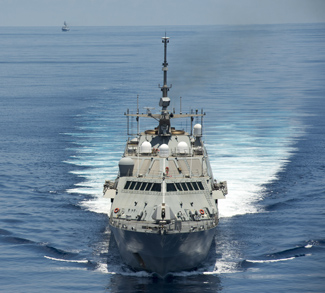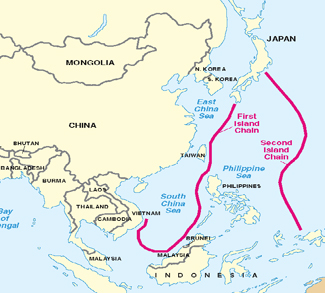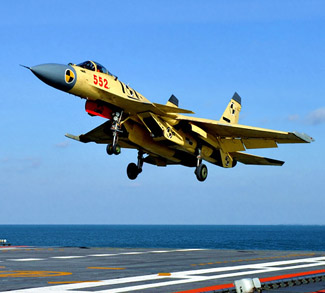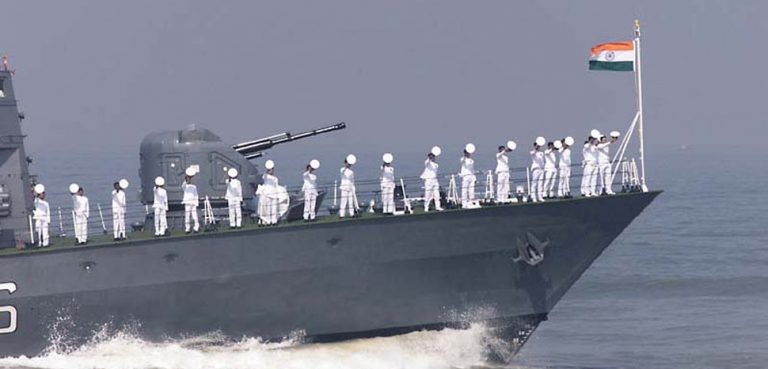US President Barack Obama recently (albeit allegedly) put an end to America’s foreign policy that had resisted external influence and interference in the Western Hemisphere. The Monroe Doctrine originally stated that efforts by foreign (European) states to colonize and become involved in states either in North or South America would ultimately be seen as aggressive acts. These conditions were articulated clearly and concisely by former president James Monroe in his seventh annual message delivered to Congress in December 1823.
Monroe declared, “we should consider any attempt on their part to extend their system to any portion of this hemisphere as dangerous to our peace and safety. With the existing colonies or dependencies of any European power we have not interfered and shall not interfere. But with the governments who have declared their independence and maintained it … we could not view any interposition for the purpose of oppressing them, or controlling in any other manner their destiny, by any European power in any other light than as the manifestation of an unfriendly disposition toward the United States.”
But the Monroe Doctrine cannot be generalized across all foreign actors. At times, US actions under the policy were heavily activist and excessively interventionist. Other times, they were responsive and defensive. It has always been a flexible renouncement of the Monroe Doctrine that has strangely escaped international attention. Those who have tended to the declaration, attached to the claim that the U.S. has put the days of meddling in the foreign affairs of states situated throughout the Western Hemisphere with impunity in the past, have demonstrated a profound degree of pessimism.
Keck wrote that, “the truth of the matter is that the Obama administration is almost certainly not disavowing the spirit of the Monroe Doctrine. If a country like Russia or especially China were to try and station large numbers of troops in Central America, it’d likely have to go through the US military first, as Moscow learned during the Cuban Missile Crisis.”
This historical deviation in US foreign policy should be contextualized in order to consider how the US might react in the face of real interference – in this case China. Why China? Over the past several years, much has been written on China’s (and the enigmatic private businessman Wang Jing who is providing $50 billion USD), efforts to build the second and largest interoceanic grand-canal project in Central America (only this canal will be in Nicaragua, not Panama). Thus, if ever there was a threat to the establishment and management of American hegemony in the Western Hemisphere, then China’s intervention in this region rightfully finds its place. It is not unlike British intervention in the final decade of the 19th century, when the British violated the principle of non-colonization. It also comes at a time when the relationship between the United States and China is not so smooth (at least on the surface this might appear to be the case).
With a preponderance to extending its influence beyond Asia, the Nicaragua canal, as with many projects currently being undertaken by China and others, is part-and-parcel of the so-called “return of geopolitics” and resurgence of geopolitical rivalry. There is value in questioning the strategic vision attached to the canal project in economic terms. Does it strengthen China’s economy? Or, does the canal project fill a dual role?
The project has questionable economic relevance due to the large investment. Toll charges would need to be set at competitive rates, but these might not be able to easily recover the investment, especially after social costs are taken into account. But, if it is expected to be completed by 2019, then the project overall has less than questionable significance in other areas. In other words, there is a very specific purpose for this canal. One of the major catches here, however, is whether its purpose is entrenched in the near future or if it is associated with a view 40-50 years into the future. Where is China looking?
If it were part of a “grand strategy,” it would be constructive to ask whether there is an assertive grand strategy at play or not. If so, does this project represent part of an assertive policy/strategy? Being able to locate this project in these terms is useful for seeing or putting together a more detailed map of Chinese strategy. Mixed signals have come to characterize China’s “unpredictable” foreign policy. Last year, Yinhong wrote about China’s President Xi Jinping, stating that he “frequently refers to the ‘Chinese Dream,’ or ‘the great resurgence of the Chinese nation.’ Coinciding with this, the People’s Liberation Army’s (PLA) goal to build up modernized forces has shifted to the simpler but more comprehensive and forceful aim of ‘being capable of fighting, and fighting victoriously.’”
China’s actions spurred ideas about “China’s Monroe Doctrine” with the establishment of the East China Sea Air Defense Identification Zone (ADIZ), which the US tested, and pushing for extensive “strategic space” around China, and other actions that have led to a the historical end of Japan’s security policies and the Japanese Prime Minister Shinzo Abe’s move to reinterpret and reform Japan’s constitution. Moreover, China has assumed a considerable role in ameliorating the economic situation in Russia brought on by post-Crimea annexation sanctions from the European Union (EU) and the US.
One aspect we can be sure of is that Beijing, in its foreign policy, places geopolitics at a very high level. Perhaps this is the result of China’s historical experience over previous decades, maybe even much longer. As such, China retains an intimate perception of itself as a political, economic, cultural, and military power well beyond its own borders. The idea is tantamount to present-day Russia and the way it sees what has been termed the “near abroad.” Yet, we don’t know if this is the limit of China’s historical experience, or at least in the sense that it may apply its experience to areas/regions beyond those in which it was involved. After all, Nicaragua has limited diplomatic relations with China, for it has recognized Taiwan’s independence.
East Asia is moving toward being part of a bipolar superpower system. Given this, it might not matter where China operated historically, in that where it did not operate won’t necessary constitute limits to its power projection. China has always been quite cautious when it comes to testing the “waters” and seeing the limits of its stride. There are some interesting relationships that should be underscored here when considering China’s grand strategy. One of them is this inclination to “test” others. It is certainly a “black box,” to use IR theoretical parlance.
If there is a grand strategy to be seen here, it is possibly creating as many, if not more, hindrances, to Chinese expansion of power abroad as it is prospects. Recently, Vietnam signed a decree that could lead to a military draft. Chinese naval movements have attracted the attention of Vietnam, Japan, the Philippines, and others in the region, which has resulted in the deployment of warships to disputed areas. We could be entering into a very long period of rivalry that becomes a “new normal” balance of military power and relations where China’s grand strategy becomes a little more than just an assertive foreign policy.
Managing choke points appears more significantly now than it did in the past. What appears to be an endless horizon of literature has appeared, offering analyses of the implications of losing control of some of these points due to issues like piracy, terrorism, insurgency, and lack of friends, partners, and allies, among other factors. Reducing distances and increasing the level of control that China could have over select choke points and access routes for vital commodities (like crude oil, particularly for China, the energy demands of which growing significantly and could double by 2035) figures prominently in its grand strategy. In addition, trade can be used as a springboard to further deepen relations between China and its distant partners.
An activist but far less assertive response by the United States to protect its interests in Central American would be to focus on the expansion of the Panama Canal as a response to China’s construction of a Nicaraguan canal. Financial support for such a response need not come from the US government. If US interests in an expansion of the Panama Canal are joined to economic, political, diplomatic, and military benefits, then there are numerous domestic sources of support.
Drawing information from “Defense Contract Trends: US Department of Defense [DoD] Contract Spending and the Supporting of the Industrial Base,” between 2001 and 2010, funds in USD obligated by the DoD to contract awards exceeded 100% with contract spending outpacing many other areas and US Army contract spending was steady each year after 1999.
The historical funding picture, as outlined by DoD can be interpreted in different ways. On one hand, it has remained steady, and one should take into account the commitment by Washington to spend on OCOs as operations in Afghanistan were slowly winding down. On the other hand, the US funding base has been stuck in a somewhat sedentary position with only moderate growth recorded over a periods of a few years. Moreover, the trajectory of DoD spending requires comparison with China’s spending.
Given the billions of US dollars in trade that takes place as a result of the Panama Canal, there is extensive interest in seeing expansion funded by the US government and many private companies, not only in the US, but further abroad that benefit from trade via the Panama Canal.
There is some work in differentiating between the US defending its position vis-a-vis the Monroe Doctrine and pursing its “Pivot to Asia” and what the Chinese have referred to as US intentions to “contain” China. With this, it is worth contemplating whether China’s intention is to challenge the U.S. and its Monroe Doctrine or reverse US efforts of Chinese containment. Has the Monroe Doctrine lost its original meaning? Even if it has, Obama’s decision to “open” Cuba is the beginning of creating more stable relations in Central and South America.
This point suggests the need for comparison between US economic initiatives and Chinese initiatives in the region. Which country is ahead of the other? Which country has great momentum in the region? Which country can see great long-term prospects for its economic initiatives? Strong criticism has been made against the move to “open” Cuba. What the US received in return is marginal at best, at least in the immediate period. However, the long-term effects could really be different. Normalizing relations with Cuba could take a tremendous amount of time with the market/economic benefits being heavily outweighed. Overall, China is pursuing a much smoother plan economically that has the potential for great payback far into the future – 25-50 years from now is where at least one of these countries is looking.
Yet, it appears as though a host of detractors, naturally, have put great effort into arguing that the move toward Cuba has amounted to very little and is even a difficult symbolic sale. This is something that other countries will certainly take notice of, and above all, relations between Cuba and neighboring countries are subject to change before relationships between the US and others in the region begin to noticeably improve.
Extensive investment in infrastructure with promises for more money to fund other projects has strengthened ties with some countries that maintain relations with China but have failed to move the relationship that others share with Taiwan. In this respect, China is poised to move on only a portion of the Caribbean Community (CARICOM) (now nearly half a century old) landscape.
But even with its activities in part of the region, there is a possibility of making its presence felt with “hard” power capabilities. This does not imply resorting to armed conflict, but there is a possibility that China would consider stationing military naval units at or near the Nicaragua canal with the aim of protecting its interests. This, however, should be discussed further but as a possibility in a specific context. One potential product of such an event is the arrival of other foreign naval units. Looking to the issues of drug trafficking and smuggling, these opportunities push us in a direction of considering the much larger and long-term effects of the movement of illicit goods and what it will take to police such challenges.
Russia, having a very close relationship with Nicaragua (Nicaragua having recognized Abkhazia and South Ossetia), has recently sent police to help Nicaragua with narcotics trafficking. It has also sent two ships that have taken part in anti-narcotics exercises in concert with the Nicaraguan and Honduras navies. Moscow dispatched its Vishnya-class intelligence ship, the Viktor Leonov as well as the Nikolay Chiker support ship to take part in the drills.
Each state’s intentions to deploy warships to the Caribbean require consideration amid their specific geopolitical interests. For example, Russia’s deployment of two ships may not be a direct result of the Nicaraguan canal, but rather it could be based on Moscow’s need to strategically place ships at various points around the world if it’s to effectively build on its plans for expanding its current influence.
The UK reported the use of military assets in the Caribbean to interdict drug trafficking in 2014 (although this has taken place at other times). HMS Argyll helped to intercept 850kg of cocaine (estimated worth of 36M GBP). HMS Argyll seized around 1,600 kilograms (estimated worth of 68M GBP). Still, the canal has not been the major attraction. Instead, drug trafficking and disaster relief (for Bermuda) have been the primary reasons for the warship’s presence in the Caribbean, or at least these are the more “official” justifications. The comparison is productive for understanding a network of interests, but also for illustrating a difference in firepower and capabilities of each state.
Through financing alone, a “Chinese canal” in the Western Hemisphere has directly challenged US pre-eminence in the region. The Nicaraguan government has granted China 50 to 100-years’ control of the canal. To protect its interests and this bold challenge and to facilitate its future interests in strategic primacy, China may step a bit further and build facilities to permanently host the Chinese navy, including warships, which are able to move freely into the Caribbean and Atlantic.
China’s navy is making increasing visits and forging a permanent presence in the Indian Ocean. They can do the same in the Caribbean and the Atlantic if they choose to do. This is a nuclear-powered People’s Liberation Army Navy (PLAN) and boasts naval build-up as well as a network of naval stations. In 2014, impressive pictures were taken of China’s first carrier battle group with China’s aircraft carrier Liaoning and numerous warships at sea.
China’s growing pains, despite this, are inescapable. PLAN is showing its relative inexperience on the ocean. The incident between the US cruiser and the Chinese carrier battle group in 2014 is demonstrative of this. PLAN has to show that it knows how to operate in the “global commons,” and operating at any given point is going to bring pressure from other countries that have expectations about China’s conduct within the “global commons. China should find this challenging testing ground for its freedom to maneuver as will other states observing or finding PLAN operating in their exclusive economics zones (EEZs).
Beijing is creating a problem for itself with regards its navy operating further away from China. As Beijing restricts other countries from operating in its own EEZs, it will have to face-up to the reality that it will be blocked from entering others’ with its warships if it stations them abroad.
States need to protect their interests. The use of force or threatening the use of force is a natural compliment to states’ foreign policies. Military presence is also a vital component in assuaging the influence of another state’s power in any particular region. China’s economics interests in the Strait of Malacca were accompanied by military presence in order to maintain a safe and uninterrupted flow of commerce in the form of petroleum. China cannot rely on another state to do so.
Projecting naval power effectively is vital. What does it mean to “project naval power effectively?” Would it be naval power operating far from China or would it be operating from bases in Central America, which allows PLAN to exist and operated “effectively” so far from Beijing?
That China is interested in developing its navy further cannot be denied. Its current military warship additions illustrate this very well and its pursuing additions to its navy that not only allow it to match states operating larger warships around China but also to surpass them and for China to become one of the leaders of the region. There is still a long way for China to go.
Recently China has publicized its plans to grow its navy by 351 warships. Its goal here is to outnumber the US navy by 2020. Whether it plans to deploy ships to regions around China or use these to expand its presence elsewhere, like Central America, is unclear. Certainly, it would be logical that these ships are intended to rival the US, and that means bringing them beyond the waters of China’s EEZs. The 2014 US-China Economic and Security Review Commission recommended to US Congress that the US navy should implement its own response in the form of building more ships to increase its presence in the Pacific “region.” If we were to calculate which regions these include, predominantly they would be the south and eastern Pacific.
Regarding the changes in China’s blue-water navy, turning to the scale of the navy (size) and the quality of its missions (territory navigated) is necessary. These compliment one another and expanding on one gives the impression of being a strategic disconnect. In 2014, PLAN navigated waters that it had never before (Sunda Strait) between the Indonesian islands of Java and Sumatra. PLAN is also modernizing. If China were to tie this into the idea of stationing a battlegroup in Central America, are these elements dependent on one another?
The U.S. is projected to increase its navy by 67 ships and undertake a rebalancing of its homeports. This raises an interesting question about China’s homeports and its ability to sustain an increase in its warships. There is interest in basing as much as 60% of the US force in the Pacific region. Another major question is whether the US has the resources to keep pace or stay ahead of China’s navy expansion plans.
Washington needs to understand the mechanisms behind any decision by Beijing to station warships or establish a naval base in the region. What are the added resources that are necessary for this type of initiative? This would be a major and very bold move by China and cannot simply be cast aside as symbolic. There are tactical and strategic implications that go beyond a military realm. A naval base can be established with a relatively small investment. The British have proved this with the establishment of a naval base in Bahrain – this is a 15M GBP investment.
Basing rights could come into play with China building a naval base in what many consider an “unstable” Nicaragua; but given the corrupt nature of the Nicaraguan government and the lack of transparency on both sides, a rather quick outcome could be seen. China invests heavily (in fact it is the heaviest investor in Burma) in regions that are considered “unstable” and are managed by fragile governments with many enemies even within the state. Burma is the site of ongoing internal warfare. Britain’s inexpensive but permanent military base is located in a country that ranked “moderate” on the Center for Systemic Peace global state fragility index.
This is a cost-effective means of establishing a presence (if even a small and remote one) in the area. China, since 2014, has pursued plans to build 18 naval bases in a variety of locations in the Indian Ocean, one being as far as Madagascar. Others include Yemen, Mozambique, Tanzania, and Pakistan. The construction of these would mean an incredible expansion of Chinese military presence.
Recently China has publicized its plans to grow its navy by 351 warships. Its goal is to outnumber the US navy by 2020. China has been identified now as a world-class military builder and not just a builder of commercial ships. But it should be noted that rapid expansion is not what China’s industry is prepared for in terms of PLAN. For now, it appears as though it is prepared for modernizing and replacing existing ships, though it will certainly be able to add to its current fleets.
Beijing could move warships to support future disaster relief operations or to support aid ships. Such moves could legitimize a (growing) presence of non-military and military ocean traffic around Nicaragua. Warships of Iran’s 34th Fleet, in the Gulf of Aden, was tasked with the special responsibility of protecting humanitarian aid ships in March 2015. Washington referred to the movement of its warships as provocative actions.
Unlike Tehran, Beijing has shown much more caution and has been quick to restrain itself in the interest of maintaining relations with Washington than Tehran has shown. Beijing could be expected to show a great deal more caution while calculating the benefits of sending some of its most powerful ships, including nuclear submarines.
Despite the possible courses of action, China has a lot of unfriendly states to maintain relations with in the Pacific, South Pacific, as well as the Indian Ocean. This fact alone grants leverage to the idea that China is looking to extend its reach to Central America even if Beijing is not yet ready or able to commit a significant amount of its resources to maintaining a presence of its warships in the area. Its aircraft carrier Liaoning, is unlikely to be of much operational use anytime soon.
The oil fields in the ocean around Vietnam have attracted a great deal of attention including live-fire exercises by Vietnamese warships. The Japanese are increasing their determination to protect the Senkaku Islands. China will find many pockets of growing pressure to contend with. It does not enjoy the “expand outward” position of the U.S. and it could find new pockets of hostility in overextended locales by states that would prefer to welcome a resurgence of the US’ historical Monroe Doctrine.





